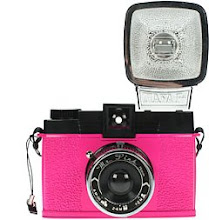
"In everything he loved magnificently lavish abundance," wrote 17th-century chronicler, the Count of Saint-Simon of France's notoriously bling-bling Sun King, Louis XIV.
From man-size silver candelabras to 770-pound silver tables and 930-pound silver mirrors, Louis XIV's chambers at the Versailles Chateau have been redecorated for a spell to serve as a reminder of the extravaganza of silver celebrated across Europe at the time.
Titled "When Versailles Was Furnished in Silver", the exhibition runs through March 9 and brings together 200 massive pieces of silverwork gathered from the collections of European royalty, a third of them from Denmark. The display design and concept is by interior designer Jacques Garcia.

"This is the first exhibition ever in the king's apartment," says Beatrix Saule, Versailles' chief curator. "It will also be the last as there'll never be anything else grand enough to place there. Our aim was to show why European royalty and visitors would rave after seeing Versailles' silver furnishings."

The silver cabinets, stools, chandeliers -- and even an indoor fountain -- are on loan not only from Denmark's Rosenborg Castle but from England's Windsors, the Prince of Hanover's Marienburg castle, the Prussian Prince's Hohenzollern, Chatsworh in Devonshire, the Esterhazy's Forchenstein, as well as from the Kremlin and the Dresden castle.

Silver, some of it from Peru, some mined in Europe, was viewed as the most prestigious metal of those times, said Saule. "Louis XIV wanted his silver to serve his image," she said. The silver pieces of furniture, so heavy they had to be carried by several men, were a sign of his power. They had to be the most beautiful, the most numerous, the most modern.
Over some two decades Louis XIV had his silver metal turned, for the first time, into very massive works of art by the finest silver-workers available, working off designs often penned by official painter Le Brun. The pieces initially travelled with the court, wrapped in leather. But when Louis XIV moved to his just-finished palace at Versailles in 1682, the silver furniture and silver tableware graced his chambers. A one-ton silver balustrade was placed around the royal bed (good night, Irene).

As reports of the opulence of the Versailles court spread across Europe, making it a benchmark of lavish living, the fashion for silver furnishings took off in other European courts, many made in the southern German city of Augsburg, some in solid metal, others plated.
The exhibition, lit by candlelight to evoke the three weekly soirees of 1,000 people hosted by the king through the long winter months, conjures up the magnificence of the court, its wining, dining and its games. But the Sun King's silver period was short-lived. Faced by war against the Augsburg coalition of countries in 1689, and short on cash, Louis XIV coolly decided to melt the furniture down to fund his troops. Estimated as having cost 10 million pounds -- the currency at the time -- to produce, the king hoped to raise six million, but actually received only two million pounds from the molten metal. This never-before-never-again exhibition brings together many of the pieces that were spared Louis' desperate efforts to refinance his troubled monarchy.

:versailles, trekearth



No comments:
Post a Comment